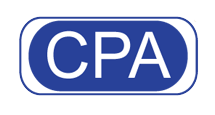15 Oct
Adopting Accounting Standards Update (“ASU”) 2017-11 can often result in favorable accounting treatment for financial instruments with down-round protection (also known as “full-ratchet anti-dilution protection”). Some companies with large derivative liabilities may be able to reclassify these liabilities to equity. Plus, adoption of ASU 2017-11 could reduce earnings volatility caused by marking the derivatives to fair value each reporting period.
ASU 2017-11 can be early adopted so why haven’t most companies already adopted the standard? Why have they included disclosures in their filings instead saying they are currently evaluating the impact of the adoption of ASU 2017-11 on their financial statements? The reason is that implementation of ASU 2017-11 can be time-consuming and complex.
Complexities of adopting ASU 2017-11 include:
Need for further accounting analysis:
After adopting ASU 2017-11, the Company still needs to determine if the financial instrument (freestanding warrant, convertible debt or convertible preferred stock) meets all the other criteria for equity classification. For instance, i) are there cash redemption features such as a requirement to pay the investor a cash settlement upon the event of a Fundamental Transaction, ii) does the Company have sufficient shares to settle all their equity-indexed instruments, or, iii) can the contract be settled in unregistered shares? Before assuming a financial instrument can be reclassified to stockholders equity, an analysis needs to be done to determine if there are any other terms or conditions which may cause continued liability classification.
Electing whether to apply the ASU using the full or modified retrospective approach: The ASU can be applied using either:
- Full Retrospective approach: The amendment is applied retrospectively to outstanding instruments for each prior reporting period presented. The cumulative effect of applying the new standard is applied at the beginning of the first historical period presented and revenue and expenses for all prior periods are restated.
- Modified retrospective approach: The amendment is applied to outstanding instruments by means of a cumulative-effect adjustment to retained earnings as of the beginning of the fiscal year of adoption and interim periods but comparative periods are not restated.
Companies will need to consider which approach is more appropriate in their circumstances. A full-retrospective approach may provide more comparable information from period to period which will assist financial statement users with trend analysis. However, it may be more time-consuming to gather the necessary information. The modified retrospective approach may be easier to implement but shareholders may demand that a full-retrospective approach is used to ensure comparability between periods.
Determining the amount of the cumulative effect adjustment to retained earnings:
When reclassifying an instrument to equity, the ASU requires that a cumulative-effect adjustment is made to retained earnings. The amount recorded is the difference in retained earnings that would have been reported if the ASU was in effect at its issuance and throughout the term of the financial instrument. When doing so, management will need to consider whether the instrument being reclassified was issued in conjunction with any other financial instruments. If so, the proceeds received at inception would need to be treated as if the instrument (or the conversion feature) had achieved equity classification at inception.
For example:
- Warrants: Suppose that freestanding warrants were issued in conjunction with debt. After adopting ASU 2017-11, the warrants would have achieved equity classification at inception, rather than liability classification. Any proceeds received would need to be reallocated as if the warrants had achieved equity classification at their inception. This would affect the total proceeds allocated to the debt instrument and the resulting debt discount. Thus, the cumulative effect adjustment would include changes to the debt discount amortization as well as the effect of changes in the fair value of the warrants that had been recorded in the income statement each period.
- Convertible debt: If the conversion feature would have achieved equity classification at inception, then it would need to be analyzed under ASC 470-20 to determine if there was a beneficial conversion feature (“BCF”) or a contingent BCF that would have been recorded. The transition accounting can become even more complex if there would have been a contingent BCF recorded at inception which would have been triggered at a point in time prior to adopting ASU 2017-11. In this case, a portion of the convertible debt would be recorded as additional paid-in capital, as if the contingent BCF had been triggered. The resulting difference would be recorded as a cumulative effect adjustment to the opening balance of retained earnings.
Final Note
The FASB issued ASU 2017-11 to help simplify the accounting for equity contracts and equity-linked embedded features. Implementing the new guidance for instruments that are outstanding on the date of adoption, however, may take some work. Blue Abaco Consulting has helped companies with early-adoption of ASU 2017-11. Please do not hesitate to contact us at 813-336-3660 if you have any questions or if we can be of assistance.



